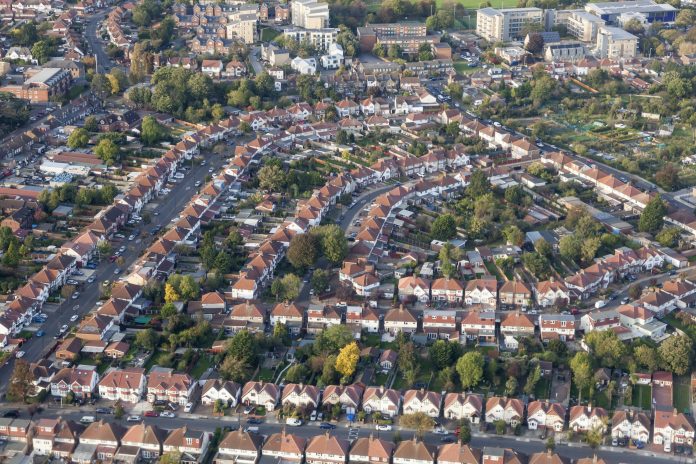Landmark changes to the UK’s outdated planning system will protect valued green spaces and offer a major boost to SME builders
The housing secretary has announced an overhaul of the country’s planning system to provide sustainable homes communities need.
The changes will transform a system that has long been criticised for being too sluggish in providing housing for families, key workers and young people and too ineffectual in obligating developers to properly fund the infrastructure to support them.
The planning system reforms will mean:
- Local communities will be consulted from the very beginning of the planning process. By harnessing the latest technology through online maps and data, the whole system will be made more accessible
- Valued green spaces will be protected for future generations by allowing for more building on brownfield land and all new streets to be tree-lined
- Much-needed homes will be built quicker by ensuring local housing plans are developed and agreed in 30 months – down from the current 7 years
- Every area to have a local plan in place – currently, only 50% of local areas has a plan to build more homes
- The planning process to be overhauled and replaced with a clearer, rules-based system. Currently around a third of planning cases that go to appeal are overturned at appeal
- A new simpler national levy to replace the current system of developer contributions which often causes delay
- The creation of a fast-track system for beautiful buildings and establishing local design guidance for developers to build and preserve beautiful communities
- All new homes to be ‘zero carbon ready’, with no new homes delivered under the new system needed to be retrofitted as we achieve our commitment to net-zero carbon emissions by 2050.
‘Once in a generation reforms’
Housing secretary Robert Jenrick, said: “Our complex planning system has been a barrier to building the homes people need; it takes 7 years to agree local housing plans and 5 years just to get a spade in the ground.
“These once in a generation reforms will lay the foundations for a brighter future, providing more homes for young people and creating better quality neighbourhoods and homes across the country.
“We will cut red tape, but not standards, placing a higher regard on quality, design and the environment than ever before. Planning decisions will be simple and transparent, with local democracy at the heart of the process.
“As we face the economic effects of the pandemic, now is the time for decisive action and a clear plan for jobs and growth.
“Our reforms will create thousands of jobs, lessen the dominance of big builders in the system, providing a major boost for small building companies across the country.”
Industry reaction
Victoria Hills, chief executive of the Royal Town Planning Institute (RTPI), said: “The policy paper published by the government today represents a massive change to the planning system.
“There are some major propositions contained within the document that will not only require the government to work hand-in-hand with the planning profession to implement, but will also demand some serious resourcing.
“The RTPI will judge the success of these reforms on how successfully they tackle inequality, accelerate progress to net-zero carbon emissions, promote sustainable transport and answer the need for strategic planning.
“It is, however, extremely encouraging to see recognition in the proposals of the importance of a local plan, quality design, community engagement and a plan-led approach.
“We will be consulting widely with our members on these proposals and look forward to working constructively with the government to deliver sensible, realistic reforms that will ensure the high quality homes we need, and a sustainable, resilient and inclusive future for the UK.
“We must however not lose sight in the immediate term of the need to resource planning now so it can support the green recovery we all want to see.”
Pete Ladhams, managing director at Assael Architecture, commented: “Local design codes setting a vision for high-quality development have the potential to bridge the chasm between a planning system that is fast and efficient and one that commands local support.
“But key to their success will be crucial decisions over who creates the design codes, who judges new development against them, and how the system is policed.
“Ministers have much to consider during the forthcoming consultation. It’s absolutely critical that there are systems in place to monitor and ensure good design.”
Tom Fyans, deputy chief executive of CPRE, the countryside charity, added: “The key acid test for the planning reforms is community involvement and on first reading, it’s still not clear how this will work under a zoning system.
“Although we welcome the government’s commitment to all areas having a local plan in place, we also need robust legal guarantees that the public are consulted regarding new development. Red lines on a map are not going to build trust in the planning system.
“As things stand, the government seems to have conflated digitalising planning with democratic planning – they’re not the same thing.
“The government’s aim to deliver carbon neutral new homes by 2050 is pitiful and represents 34 lost years given that the Code for Sustainable Homes aimed to achieve the same thing by 2016 and was dropped by government.
“If this government is serious about tackling the climate emergency, it needs to be much, much more ambitious on new build.”














